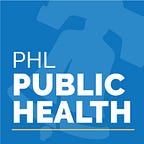Overdose Experiences of People Who Use Opioids Surveyed at a Syringe Exchange Program and Homeless Encampments
This issue of CHART highlights findings from a survey administered to individuals that actively use drugs at Philadelphia’s syringe exchange program, Prevention Point, and Kensington’s homeless encampments between December 2017 and March 2018. The survey included questions on: demographics, drug use, history of incarceration and homelessness, experiences with overdoses, awareness and access to naloxone, and treatment for addiction. The findings presented here are for 400 survey respondents who reported use of opioids in the previous three months. Results highlight their experiences with overdoses (both experienced and witnessed) and naloxone.
People who use opioids are diverse, but share risk factors
- Survey respondents who used opioids in the previous three months were predominantly male (65%), between the ages of 25–44 years old (65%), and white, non-Hispanic (55%).
- Most respondents had unstable housing (77%) and had recently participated in drug treatment (59%). A large proportion (40%) also reported being recently incarcerated.
Many people who use opioids also use other drugs
- Nearly all survey respondents used heroin in the previous three months (94%).
- Intentional use of fentanyl (69%), pharmaceutical opioids (37%), benzodiazepines (52%), and cocaine (71%) were also common.
- Nearly all individuals reported that they administered opioids by injection in the previous three months (81%; data not shown).
Nonfatal opioid overdoses are common
- More than a third of survey respondents (39%) reported experiencing a non-fatal overdose in the previous 12 months.
- Most respondents (85%) reported witnessing an overdose in the previous 12 months.
More than half of people who use opioids have administered naloxone
- Of 338 individuals who witnessed an overdose in the previous 12 months, the majority had been trained to use naloxone (79%) and had carried naloxone in the previous three months (70%).
- More than half (56%) of opioid users who witnessed an overdose reported that they responded by administering naloxone; however, only 21% also called 911.
What can be done
The Health Department is:
- Working with the Department of Behavioral Health and Intellectual Disability Services, other City agencies, and health care providers to increase the availability and accessibility of medication-assisted treatment for opioid use.
- Conducting a media campaign that encourages Philadelphians to carry naloxone, the opioid overdose reversal drug, and training individuals on how to use it.
- Distributing naloxone to organizations serving high risk populations (including syringe exchange, law enforcement, homeless services, and prison systems).
- Providing fentanyl testing strips to encourage individuals who use drugs to test their drug supply before use.
Health care providers can:
- Encourage individuals with an opioid use disorder to begin treatment. This includes medication assisted treatment such as methadone, buprenorphine (Suboxone™), and extended release naltrexone (Vivitrol™).
- Prescribe or distribute naloxone to their patients who are taking prescription opioids or who use illicit drugs, especially to those leaving drug treatment programs.
- Encourage patients who use drugs to never use alone, and to avoid mixing opioids with alcohol or benzodiazepines.
- Instruct individuals to call 911 immediately in the event of a suspected opioid overdose, even if naloxone has been used successfully. Remind them of the Good Samaritan Laws in Place in Pennsylvania.
People can:
- Learn to recognize an overdose and carry naloxone. Naloxone is available at pharmacies in Pennsylvania without a prescription under a “standing order” signed by the Physician General.
Resources
- Drug Treatment referrals and education: http://dbhids.org/addiction-services/
- Community Behavioral Health (Medicaid-enrolled) — 1–888–545–2600
- Behavioral Health Services Initiative (uninsured) — 215–546–1200
- Naloxone resources and training dates: www.phillynaloxone.com
- Harm reduction resources and education, including syringe exchange and infectious disease screening: Prevention Point of Philadelphia — 215–634–5272; www.ppponline.org
- Housing resources: http://www.philadelphiaofficeofhomelessservices.org/
Suggested citation: Philadelphia Department of Public Health. Overdose Experiences of People Who Use Opioids Surveyed at a Syringe Exchange Program and Homeless Encampments. CHART 2018;3(3):1–4.
CHART is a publication of the Philadelphia Department of Public Health, and is intended to highlight under-reported or under-appreciated public health issues in an effort to kick-start a conversation. Readers can subscribe to CHART on Medium, or on our website.
